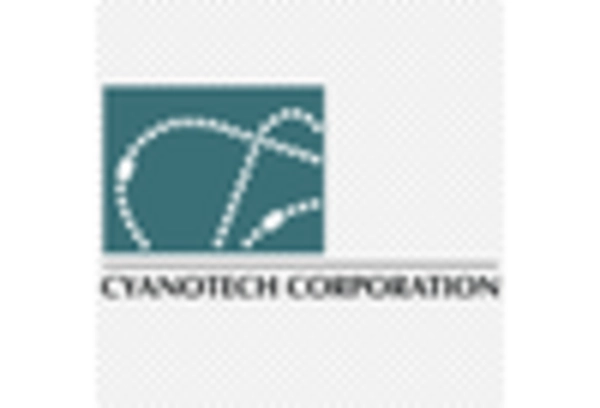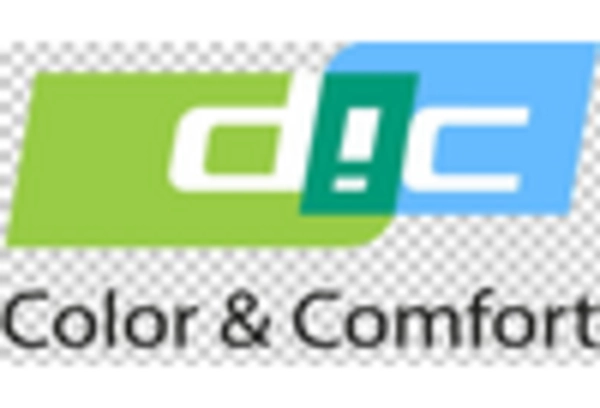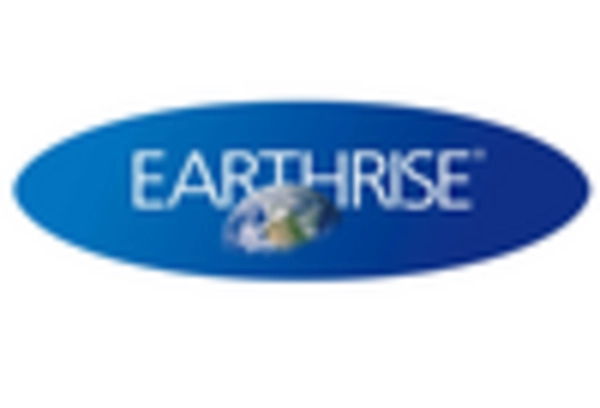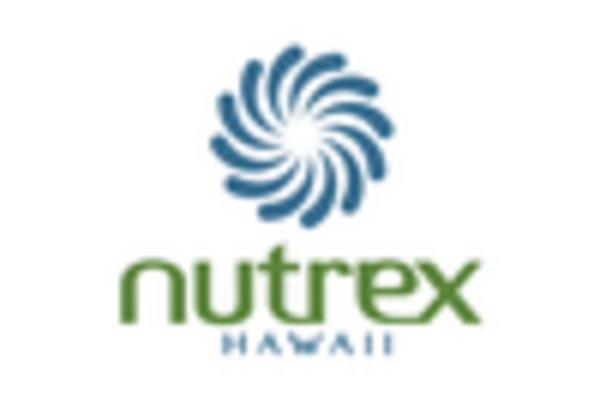Regulatory Support for Health Foods
The spirulina market in Europe benefits from a favorable regulatory environment that supports the growth of health foods. European regulations increasingly promote the consumption of functional foods, which include spirulina due to its health benefits. The European Food Safety Authority (EFSA) has recognized the nutritional advantages of spirulina, which enhances its credibility among consumers. This regulatory backing encourages manufacturers to invest in spirulina products, knowing they align with health guidelines. Furthermore, the European Commission's initiatives to promote sustainable agriculture and food security may lead to increased funding and support for spirulina cultivation. As a result, the spirulina market in Europe is likely to see enhanced growth opportunities, driven by both consumer demand and supportive regulations.
Rising Popularity of Plant-Based Diets
The spirulina market in Europe is significantly influenced by the rising popularity of plant-based diets. As more consumers adopt vegetarian and vegan lifestyles, the demand for plant-derived protein sources has escalated. Spirulina, being a highly nutritious algae, serves as an excellent protein alternative, appealing to health-conscious individuals. Industry expert's suggests that the plant-based food market in Europe is expected to grow at a CAGR of 10% from 2025 to 2030, with spirulina products likely to play a crucial role in this expansion. This shift towards plant-based eating not only reflects changing dietary preferences but also aligns with environmental sustainability goals, further enhancing the appeal of spirulina. Consequently, the spirulina market in Europe is well-positioned to capitalize on this trend, as consumers increasingly seek out plant-based nutritional options.
Consumer Awareness and Education Initiatives
The spirulina market in Europe is benefiting from increased consumer awareness and education initiatives regarding the health benefits of spirulina. Various organizations and health advocates are actively promoting the nutritional advantages of spirulina, emphasizing its role as a superfood. This educational push is crucial, as informed consumers are more likely to incorporate spirulina into their diets. Surveys indicate that approximately 60% of European consumers are now aware of spirulina and its health benefits, a significant increase from previous years. This heightened awareness is likely to drive sales and consumption of spirulina products, as consumers seek to enhance their health through natural means. Consequently, the spirulina market in Europe is expected to grow as educational efforts continue to inform and engage potential customers.
Increasing Demand for Nutritional Supplements
The spirulina market in Europe is experiencing a notable surge in demand for nutritional supplements. This trend is largely driven by a growing awareness of health and wellness among consumers. As individuals increasingly seek natural sources of vitamins and minerals, spirulina, known for its high protein content and rich nutrient profile, has gained traction. Recent data indicates that the European dietary supplements market is projected to reach €30 billion by 2026, with spirulina products contributing significantly to this growth. The rising inclination towards plant-based diets further fuels this demand, as consumers look for sustainable and nutritious alternatives. Consequently, the spirulina market in Europe is poised for expansion, as manufacturers respond to this increasing consumer interest by developing innovative spirulina-based supplements.
Innovations in Food and Beverage Applications
The spirulina market in Europe is witnessing a wave of innovations in food and beverage applications. Manufacturers are increasingly incorporating spirulina into a variety of products, ranging from smoothies to snack bars, to cater to the evolving tastes of consumers. This diversification is driven by the growing trend of functional foods, where consumers seek added health benefits in their everyday diets. Recent market analysis indicates that the functional food sector in Europe is projected to reach €50 billion by 2027, with spirulina-infused products likely contributing to this growth. The versatility of spirulina allows it to be used in various culinary applications, making it an attractive ingredient for food developers. As a result, the spirulina market in Europe is expected to expand as more innovative products enter the market.


















Leave a Comment